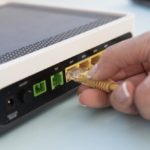
Speed Test App
Tips and Guides - 2
Understand your internet speed: what to expect
Understanding your internet speed is crucial because it allows you to set realistic expectations for what you can and cannot do online. By knowing your internet speed, you can ensure that you have enough bandwidth to support your online activities without experiencing delays or buffering.
– Sponsored Links –
For example, if you’re a gamer or stream a lot of high-definition video content, you’ll need a higher internet speed than someone who just uses the internet to browse social media and check emails. Similarly, if you work from home and rely on video conferencing, you’ll need a faster internet speed than someone who works offline.
Knowing your internet speed can also help you troubleshoot problems with your internet connection. If you’re experiencing slow speeds, you can run a speed test to determine if the issue is with your internet service provider or with your home network.
In addition, understanding your internet speed can help you make informed decisions when choosing an internet service provider and internet plan. You can compare different plans and providers to find the one that offers the speeds you need at a price you can afford.
– Sponsored Links –
What is the maximum internet speed limit set by the National authorities?
There is no universal maximum internet speed limit set by national authorities as it varies depending on the country and the regulatory body governing telecommunications in that country. Additionally, even within a country, different regions or providers may have different maximum speed limits. It’s important to check with your local telecommunications regulator or internet service provider to find out what maximum speeds are available in your area.
To set realistic expectations for your internet speed based on your location, you can check the average internet speed of your region or country using websites like WordPopulationReview.com (https://worldpopulationreview.com/country-rankings/internet-speeds-by-country). This can help you understand what speeds are typical in your area and what you can reasonably expect from your internet connection.
– Sponsored Links –
– Sponsored Links –
What is the difference between good, fast, and slow internet speeds?
The terms “good,” “fast,” and “slow” are often used to describe internet speeds, but they can be relative and somewhat subjective. However, in general, a “good” internet speed is one that allows you to do most online activities without noticeable lag or buffering. This typically means a download speed of at least 25 Mbps, which can support tasks like streaming video, online gaming, and video conferencing.
A “fast” internet speed is one that is faster than the average speed for your area or country. For example, if the average internet speed in your country is 50 Mbps, then an internet speed of 100 Mbps would be considered fast.
Conversely, a “slow” internet speed is one that is below the average speed for your area or country, and may result in noticeable lag, buffering, or difficulty with certain online activities. However, what is considered “slow” can vary depending on the task and your location. For example, a download speed of 10 Mbps may be sufficient for basic web browsing and email, but may be considered slow for streaming video or playing online games.
Here are more quantitative and specific internet speed requirements for various online activities:
- Web browsing and email: You can perform these activities with a minimum download speed of 1-3 Mbps.
- Streaming standard definition (SD) video: You need at least 3-4 Mbps download speed for this.
- Streaming high definition (HD) video: You need at least 5-8 Mbps download speed for this.
- Streaming 4K video: You need at least 25 Mbps download speed for this.
- Playing online games: You need a download speed of at least 3-6 Mbps and upload speed of at least 1 Mbps for online gaming.
- Video conferencing and video chat: You need at least 1-3 Mbps upload and download speed for this.
- Uploading or downloading large files: You need a minimum of 10 Mbps upload and download speed for this.
– Sponsored Links –
What are the signs of slow internet speed and how can it be detected?
Signs of slow internet speed may include:
Slow loading times for web pages: If it takes a long time for websites to load or you see a lot of buffering while streaming videos, it may be an indication of slow internet speed.
Frequent disconnections: If your internet connection keeps dropping or disconnecting, it may be an indication of slow internet speed.
Poor video call quality: If you experience poor video call quality, such as frequent freezing or distortion, it may be an indication of slow internet speed.
Slow download and upload speeds: If it takes a long time to download or upload files, it may be an indication of slow internet speed.
To detect slow internet speed, you can run a speed test using an online speed test tool. This will give you an accurate measurement of your internet speed, including your download and upload speeds. If the results show that your internet speed is significantly slower than what you are paying for or what is expected for your location, it may be time to contact your internet service provider to troubleshoot the issue.
– Sponsored Links –
– Sponsored Links –
Table of Contents
– Sponsored Links –
– Sponsored Links –
– Sponsored Links –



